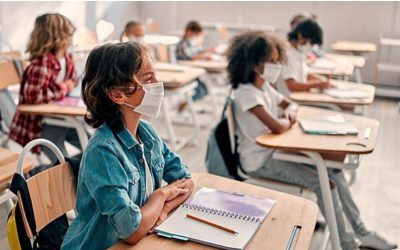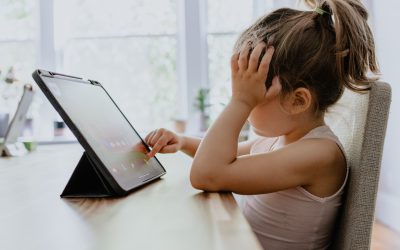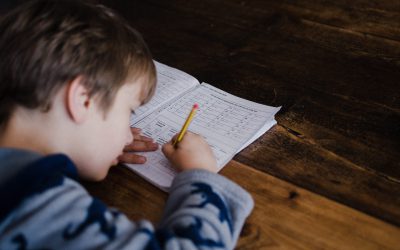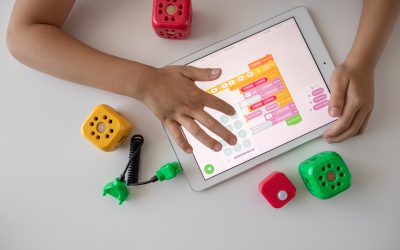COVID news May 11 – May 15
18 May 2020 | News
In this week’s news:
- The first week of reopening of primary education in the Netherlands: 97% of head teachers are positive, however more than 10% of pupils were absent in 8% of the schools, while 5% of the schools lacked sufficient teachers.
- New parents report schools discouraging them to allow preschoolers their usual adjustment time in school, schools pressuring concerned parents to bring their child to school, and confusion about children with asthma and hay fever.
- Attention to the social-emotional development of children and group cohesion in class, with examples from the Netherlands and England
- The Dutch inspectorate monitors the consequences of school closures and reports head teachers and school boards’ views of the main obstacles for quality education, such as parents with limited opportunities to support their child in homeschooling, the workload of teachers and the lack of personal contact with the pupils. Positive aspects of the current situation are the involvement and digital skills of school staff and the rapid development of remote learning.
- UNESCO recommends monitoring student performance, especially of disadvantaged groups, monitoring the effectiveness of the various teaching methods and platforms that are now being used, as well as the changes that are currently being made in planning, examination, remediation, retention and promotion. This information is necessary to determine the long-term consequences of the current closures.
Prof. Dr. Melanie Ehren & Rukiye Turkeli
18-05-2020


Reopening of schools in Netherlands
Primary schools in the Netherlands re-opened on the 11th of May. According a poll conducted among more than 1100 school leaders and administrators, 97% of the respondents are positive about the first week. The only reported concerns are the feasibility of social distancing for adults and safe school transport for children with special needs.
Pupils and teachers who stay at home
The poll also shows that in 8% of schools, more than 10% of students did not attend school; an estimated number of 55,000 pupils. The main reasons are that these pupils or their family have an increased health risk, or that parents are concerned about the safety of their child. In addition, some (highly educated) parents rather like to continue homeschooling their children to prevent potential health risks. The Department of Education will not enforce school attendance for the time being.
According to head teachers and administrators in almost half of the schools all teachers were present, but in most schools on average 2% of the teachers stayed at home due to health risks. However, most of these teachers (80%) continue to support home-schooling from their own homes, for example by supervising pupils and offering them online support. 5% of the schools however experienced a shortage of teachers in school and as a result were not able to teach all classes.
Response and concerns of Dutch parents
According to Dorine Wiersma (Information manager national Parent Association ‘Ouders en Onderwijs’), the parent association has received the following questions and comments from parents in the past week:
- Some schools are discouraging new parents to allow their 4-year olds to get to learn the school in a period of adjustment, despite earlier guidelines of the Education Inspectorate and National Government to allow this. New parents feel unwelcome as a result. These parents also don’t have access to subsidized childcare anymore and this is causing additional problems.
- Despite parliamentary guidelines motion by PVV and PvdA, the national Parent Association also receives complaints from parents that they are pressured by schools to send their child to school, despite health-related concerns. Schools are requiring parents to send in a medical certificate from GPs while GPs are actually not allowed to provide one.
- Schools have different guidelines in how they deal with pupils which for example have hay fever or asthma, and thus similar symptoms to the Corona virus. The Dutch health institute, RIVM has stated that children with hay fever can go to school; when symptoms are similar to COVID-19, parents need to consult with school management or their GP. This is however creating confusion with head teachers who lack the necessary medical knowledge to make a good assessment.
- Parents have different views about whether and how schools should reopen, which makes it difficult for parents to represent parent in the discussion with the schoolboards.
- Finally, parents are concerned about pupils who will soon be transferring to secondary education. How will these new students start and what problems will they experience?
Social-emotional development of students and group cohesion
Attention to the social-emotional development of students, and the sharing of experiences of the past weeks during COVID-19 pandemic is important in the transition back to school. Students should be given the space to share their experiences during the reopening period and to develop group cohesion again. Some schools focus on teaching literacy and numeracy, while other schools allow students to share their experiences and connect to their classroom peers who are taught on another day to ensure group cohesion.
The English website Mentally Healthy Schools offers school staff and parents access to tools which aim to support sharing of experiences of students during the Covid- 19 pandemic. For example, an ’emotion wheel’ (see photo) is used to support students in expressing their emotions.

Emotion wheel developed by Mentally Healthy Schools. Available at: https://www.mentallyhealthyschools.org.uk/resources/emotion-wheel?pdf=coronavirus-anxiety-toolkit
Monitoring school quality : COVID-19 monitor Inspectorate of Education
 The Dutch Inspectorate of Education concludes – based on a survey of a representative sample of schoolboards of 865 schools, school boards and networks for inclusive education (primary and secondary education)– that the core tasks of education were only partially met through homeschooling and online teaching. Their monitoring report, which is primarily published to inform schools and policy-makers, shows that most students had access to remote learning, but a high loss of learning time has occurred, particularly for vulnerable students in primary and secondary education who did not, or only infrequently access online learning. They also report concerns over teachers’ workload and the lack of face to face contact with students.
The Dutch Inspectorate of Education concludes – based on a survey of a representative sample of schoolboards of 865 schools, school boards and networks for inclusive education (primary and secondary education)– that the core tasks of education were only partially met through homeschooling and online teaching. Their monitoring report, which is primarily published to inform schools and policy-makers, shows that most students had access to remote learning, but a high loss of learning time has occurred, particularly for vulnerable students in primary and secondary education who did not, or only infrequently access online learning. They also report concerns over teachers’ workload and the lack of face to face contact with students.
School boards and head teachers also reported a number of positive outcomes of the current closures, particularly in how quickly schools were able to develop remote online teaching. Many boards are also positive about teachers’ development of digital literacy and see opportunities for more blended learning in the future.
The Inspectorate is planning further monitoring with a survey of parents and pupils, where outcomes will be reported in the annual report in 2021.
Monitoring quality of education: advices from UNESCO
 UNESCO also offers guidelines on how to monitor education systems and the changes they are implementing in the current pandemic. UNESCO recommends collecting information on the following three indicators:
UNESCO also offers guidelines on how to monitor education systems and the changes they are implementing in the current pandemic. UNESCO recommends collecting information on the following three indicators:
- Student participation in all platforms of education delivery disaggregated by individual student characteristics, such as gender and poverty
- Teacher participation in all platforms of education delivery disaggregated by individual teacher characteristics, such as gender and contract status
- Use of quick and short tests for the frequent assessment of student learning and progress.
UNESCO recommends to collect data on these three indicators in the following manner:
- Focus on only a few key indicators and collect data from samples of the school and student populations instead of the entire education system.
- Oversampling of vulnerable students (i.e. students in poverty, with special needs, and those who use minority languages) to monitor for equity.
- A frequent assessment of student achievement to allow for a comparison of learning from different methods of instruction and through different platforms. Lessons from such assessments can inform teacher training, and further development of such platforms. UNESCO in collaboration with the World Bank and the Global Partnership for Education is in the process of developing short standardized tests to measure learning under a global proficiency framework. These tests will soon be freely available and accessible through the global commons.
- Further background information may be needed to gain a macro picture on school calendar changes, affected examination schedules, adjusted promotion procedures, and remedial education plans.
See also information for:
Most recent blogs:
How LEARN! supports primary and secondary schools in mapping social-emotional functioning and well-being for the school scan of the National Education Program
Jun 28, 2021
Extra support, catch-up programmes, learning delays, these have now become common terms in...
Conference ‘Increasing educational opportunities in the wake of Covid-19’
Jun 21, 2021
Covid-19 has an enormous impact on education. This has led to an increased interest in how recent...
Educational opportunities in the wake of COVID-19: webinars now available on Youtube
Jun 17, 2021
On the 9th of June LEARN! and Educationlab organized an online conference about...
Homeschooling during the COVID-19 pandemic: Parental experiences, risk and resilience
Apr 1, 2021
Lockdown measures and school closures due to the COVID-19 pandemic meant that families with...
Catch-up and support programmes in primary and secondary education
Mar 1, 2021
The Ministry of Education, Culture and Science (OCW) provides funding in three application rounds...
Home education with adaptive practice software: gains instead of losses?
Jan 26, 2021
As schools all over Europe remain shuttered for the second time this winter because of the Covid...





